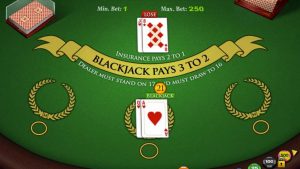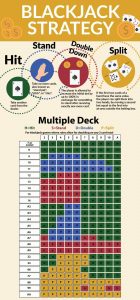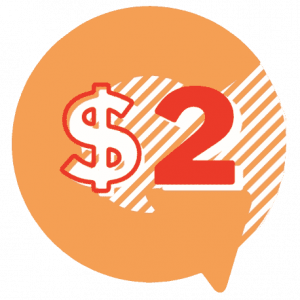The guide for how to play Blackjack
 Blackjack is without a doubt one of the most famous card games played in all Canadian casinos. In the Steeves250 article dedicated to this game you will find everything you need to learn how to play Blackjack to experience the adrenaline of sitting at a live 🧔 casino table! From the rules, to the game strategies we will provide you with all the information you need to know how to win at blackjack.
Blackjack is without a doubt one of the most famous card games played in all Canadian casinos. In the Steeves250 article dedicated to this game you will find everything you need to learn how to play Blackjack to experience the adrenaline of sitting at a live 🧔 casino table! From the rules, to the game strategies we will provide you with all the information you need to know how to win at blackjack.
How to Play Blackjack 2022
How to Play: Blackjack Rules
 The main objective of blackjack is to use the cards received to get a value higher than that of the dealer without getting high, that is, without exceeding the threshold of 21✅. And usually a blackjack table consists of a maximum of six players, croupier excluded and the number of decks with which you play can vary from a single deck to eight decks.
The main objective of blackjack is to use the cards received to get a value higher than that of the dealer without getting high, that is, without exceeding the threshold of 21✅. And usually a blackjack table consists of a maximum of six players, croupier excluded and the number of decks with which you play can vary from a single deck to eight decks.
The first essential thing to be successful blackjack players is obviously to know the value of the cards 🂤. The figures are worth 10, the cards from two to 10 have a value equal to that present on the card, while the aces are worth 11. And a very important aspect to know if you have an ace in a hand is that you can choose to receive a third card without the risk of busting. For example, in case you have an ace and a 7 🌟 in your hand you have the option to take the risk of raising your score. In the case of a figure, a card with a value of 10, the sum of your hand will not be 28, but 18 because the ace will be worth 1.
How to play a hand of blackjack
At the beginning of a hand each player places his bet and at this point the dealer will give two cards face up to each player and he will receive one card, also face up. Each player when it is his turn decides what to do. If he is satisfied with the sum of the two cards, he can “stay” and face the dealer with the initial value of his cards. If he thinks that the sum is too low, he can choose to receive a new card to get closer to 21 🚀.
 If the first two cards are an ace and a figure or a ten, the player has a Blackjack in his hand and does not have to make any decision during his turn. In this case the winnings will be paid x2.5, while in the case of a normal win the winnings are paid x2. During his turn, the player will also have the option to choose to make other bets to strengthen his position or reduce his exposure. Once all players at the table have completed their turn the dealer receives his second card. Once the dealer has completed his turn the outcome of the turn will be evaluated.
If the first two cards are an ace and a figure or a ten, the player has a Blackjack in his hand and does not have to make any decision during his turn. In this case the winnings will be paid x2.5, while in the case of a normal win the winnings are paid x2. During his turn, the player will also have the option to choose to make other bets to strengthen his position or reduce his exposure. Once all players at the table have completed their turn the dealer receives his second card. Once the dealer has completed his turn the outcome of the turn will be evaluated.
A player wins 🏆 if, unlike the dealer, he has a blackjack in his hand; if his cards have a higher value than the dealer’s and if the dealer busts. If both the player and the dealer are wrong, the bet is considered a loser. While if the player and the croupier have cards with the same value the hand is considered void and the value of the bet is returned to the player..
How to play blackjack: the odds
 If you decide to start having fun winning blackjack hands, it’s essential that you know how to calculate your odds of winning and other key aspects of being successful 👍 at the table.
If you decide to start having fun winning blackjack hands, it’s essential that you know how to calculate your odds of winning and other key aspects of being successful 👍 at the table.
The percentage chance of winning a hand of Blackjack depends on a number of factors. The number of players at the table, the number of decks used and the hands that have already been played with those decks are all factors that you should consider carefully to improve your chances of winning big 🌟.
Let’s start with an assessment of the odds of receiving a particular card. On the table there is a 7.7% chance of getting an ace, while there are 16 cards worth 10 and the probability of getting one is 30.8%. This results in the fact that the chance of getting a blackjack is 4.8% .
While the chances of having the cards needed to have a value of 18 or higher, a threshold that many consider optimal for not receiving more cards, is 27.5%. But with such low percentages, it seems clear that it’s pretty central to know the risks of getting high by receiving a new card ♠.
Obviously, the higher the sum of the two cards, the greater the risk of going over the fateful quota of 21 ⭐. For example, if the sum of the two cards is 12, the risk of going over is equivalent to the possibility of receiving a 10, a jack, a queen and a king, ie 30.8%.
And if you need to calculate the risk associated with the cards in your hand, just multiply 7.7% by the number of cards that would make you bust. For example, if you have a 7 and a 6, your starting value is 13 and to bust you should get a 9, 10, J, Q, K i.e. 5 cards 🂤. Doing 7.7 * 5 you will find that the risk of busting is 38.6%, a figure that could prompt you to ask for another card.
Of course there are external variations that can change your ratings. For example, the number of cards that have already been used during the hand is an absolutely not to be underestimated factor to change your projections and play reasonably.
The odds of the croupier
 And to make careful decisions you will also have to consider the value of the dealer’s card. Knowing what the chances are that the dealer 🧔 will bust, considering that he will always have to reach a value of 17 or higher, is important. If your calculations allow you to see that you are in a situation where your chances of busting are lower than the dealer’s, you may choose to stay and not receive any more cards even if the sum of the cards is relatively low.
And to make careful decisions you will also have to consider the value of the dealer’s card. Knowing what the chances are that the dealer 🧔 will bust, considering that he will always have to reach a value of 17 or higher, is important. If your calculations allow you to see that you are in a situation where your chances of busting are lower than the dealer’s, you may choose to stay and not receive any more cards even if the sum of the cards is relatively low.
This is absolutely key to being successful 👍 at the blackjack tables. The most common mistake of amateur players is to focus all their choices based on the cards in hand. However, knowing the dealer’s chances are equally important. And for this reason you may also be interested in knowing what are the percentages of the 7 results that the dealer has at his disposal.
Probability of the dealer
| Sum of cards | Percentage |
|---|---|
| Busting | 28.4% |
| 17 | 14,5% |
| 18 | 13.8% |
| 19 | 13.5% |
| 20 | 17.6% |
| 21 | 7.4% |
| Blackjack | 4.8% |
How to Play Blackjack: Elementary Strategies

 And once you have a clear idea of the odds and percentages of a certain event happening during a Blackjack hand you can start thinking about what strategy to adopt when you are sitting at the table. A strategy can help you resolve any uncertainties you might have during a hand.
And once you have a clear idea of the odds and percentages of a certain event happening during a Blackjack hand you can start thinking about what strategy to adopt when you are sitting at the table. A strategy can help you resolve any uncertainties you might have during a hand.
Based on the assumption that there is no system that will allow you to always win against the dealer, we can say that there are many strategies that you can adopt at blackjack that will help you have a better chance of success 🤑.
The experts at steeves250.com use the probabilities and percentages of all possible outcomes to follow a strategy that is based on some important characteristics. First of all, if you do not have an ace in your hand, it is always advisable to stay when you have reached a value equal to or greater than 17, regardless of the dealer’s cards.
In many cases it will be necessary to look at the dealer’s card to make the correct choice. For example, if the sum of your cards is between 13 and 16 it is better to stay on that value in case the dealer has a card lower than 6 with a percentage of overcalling of 35%.
And in the case of a hand in which you receive an ace it is better to stay if the second card is an eight or a nine (in the case of the ten you would make blackjack and it is not necessary to take any choice). But if the card is less than or equal to 6 regardless of the dealer’s card you should ask for a third card.
Now that you have above-average knowledge about blackjack, all you have to do is find the best casinos that offer live gaming tables 🧔. According to Steeves250 you could start trying the offer of LeoVegas, of SNAI and Unibet. Three casinos that have an excellent game catalog and where you can find many fun variations of blackjack.







